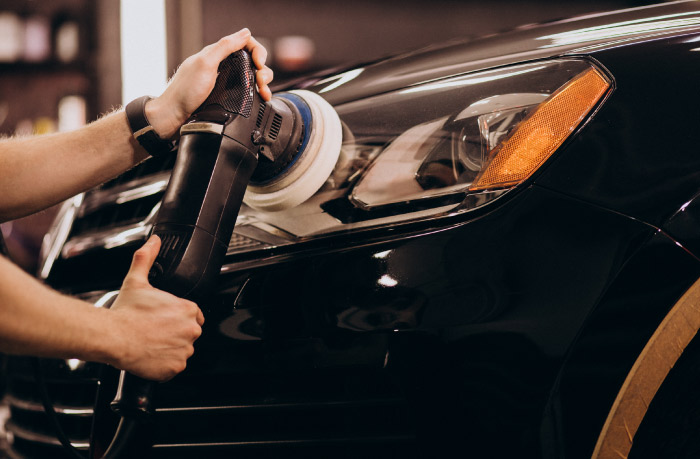Inside Out: Extensive Auto Detailing Procedures

Auto detailing is not just a superficial clean; it's an art form that rejuvenates and protects your car, ensuring it looks and feels like new. Whether you're an automotive aficionado or just a person who wants to maintain their asset, understanding the details of auto detailing can be crucial. This guide will walk you through comprehensive techniques and key advice that will elevate your auto detailing game, helping you attain that showroom shine with ease.
A lot of individuals often wonder why routine auto detailing is necessary. Beyond the aesthetic advantages, consistent detailing can extend the lifespan of your vehicle and enhance your overall driving experience. In this definitive handbook, you will discover important distinctions such as interior versus exterior detailing, expert recommendations on how frequently to detail your car, and common mistakes to avoid. Dive in as we explore the science and skills behind keeping your vehicle in excellent shape, guaranteeing both its aesthetic appeal and performance are maintained for years to come.
Understanding Auto Detailing: Significance and Regularity
Auto detailing is a critical aspect of vehicle maintenance that goes far beyond a basic wash and wax. It includes a thoroughly cleaning and refurbishment of both the interior and exterior of the vehicle, helping to preserve its appearance and value. Routine detailing not only enhances the visual appeal of your car but also shields its surfaces from harm, such as UV rays, grime, and contaminants. By dedicating in regular detailing, car owners significantly enhance their driving experience while also making certain their vehicle remains in prime condition.
The frequency of auto detailing can vary based on several factors, including driving habits, weather conditions, and the vehicle's age. Professionals generally suggest detailing your car at a minimum of twice a year for maximum maintenance. However, owners who often drive in severe conditions, such as lots of rain or extreme temperatures, may find that detailing every three to four months is more suitable. Keeping a reliable detailing schedule can help prevent more severe damage and keep your car appearing its best.
Comprehending the different aspects of auto detailing is important for ascertaining what your vehicle needs and how often it should be cleaned. Interior detailing focuses on sanitizing and freshening surfaces like seats, carpets, and dashboards, while exterior detailing consists of washing, waxing, and polishing the vehicle's body. Understanding when to emphasize each type of detailing service will make sure your car not only has a nice appearance but continues to be healthy and functional over time.
Strategies for Optimal Indoor and Exterior Maintenance
To secure a thorough interior detailing, start by taking out all individual items and any floor mats. Use a vacuum with different attachments to clean beneath seats, between crevices, and in additional difficult-to-access areas. Pay special attention to cleaning the dashboard, doors, and console, where dust and grime can accumulate. Use microfiber cloths to wipe down surfaces with a suitable cleaner, ensuring not to leave marks or residue behind. For fabric, utilize suitable cleaners and brushes to carefully lift stains, followed by removing moisture to prevent mildew.
Exterior detailing should begin with a thoroughly done wash to get rid of dirt, grime, and pollutants from the surface. Use a two-bucket method to reduce the risk of scratches; one bucket for soapy water and another for rinsing. After washing, clay treatment can be used to eliminate embedded debris, resulting in the paint smooth. Once the surface is clean, think about applying a sealant or ceramic coating for long-lasting protection and shine. This step not only enhances aesthetics but also acts as a barrier against UV rays, contaminants, and surrounding pollutants.
Lastly, regular maintenance is essential for both interior and exterior care. Schedule detailing sessions based on your vehicle’s utilization, environment, and weather conditions. During seasonal changes, adapt your care techniques to manage specific challenges, like pollen in spring or road salt in winter. Using high-quality products specifically formulated for automotive care will yield better results and preserve your vehicle's condition in the long run, proving that consistency and quality are crucial to effective auto detailing.
Typical Errors and Recommended Methods in Auto Detailing
One of the frequent mistakes in auto detailing is using the inappropriate cleaning products or techniques. Many vehicle owners underestimate the importance of using pH-balanced shampoos and microfiber cloths. Using harsh detergents can remove wax protection or ceramic coatings, resulting in dull paint. To avoid this problem, consistently opt for products particularly designed for automotive use and ad here to the manufacturer’s instructions for the optimal results.

Another frequent error is neglecting the intricate areas of the car, such as grilles, wheel wells, and seams. A comprehensive detail should not only focus on the visible surfaces; these concealed areas can collect dirt and grime, which may result in corrosion over time. Make it a habit to use smaller brushes and detailing tools to get to these spots, ensuring every nook and cranny is taken care of. This attention to detail can significantly enhance the overall appearance and longevity of the vehicle.
Lastly, many people disregard the significance of proper drying techniques after washing their cars. Employing the incorrect materials or methods can result in swirl marks on the paint. It's recommended to use soft, absorbent microfiber towels and dry the car in soft, straight motions, not using circular patterns. Additionally, consider using a quality quick detailer spray to enhance shine while drying and provide an additional layer of protection. Following these best practices will not only help in avoiding common pitfalls but also ensure a high-quality detail every time.
